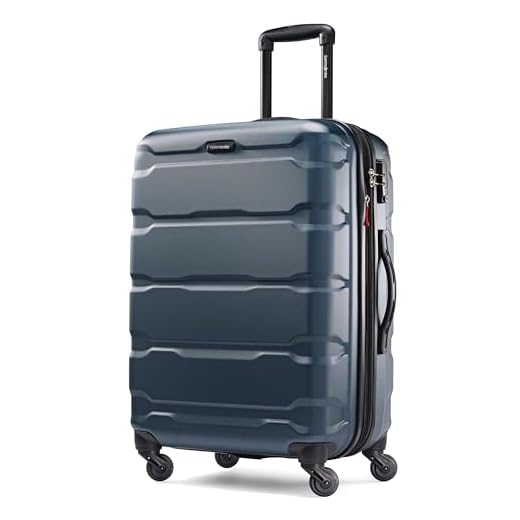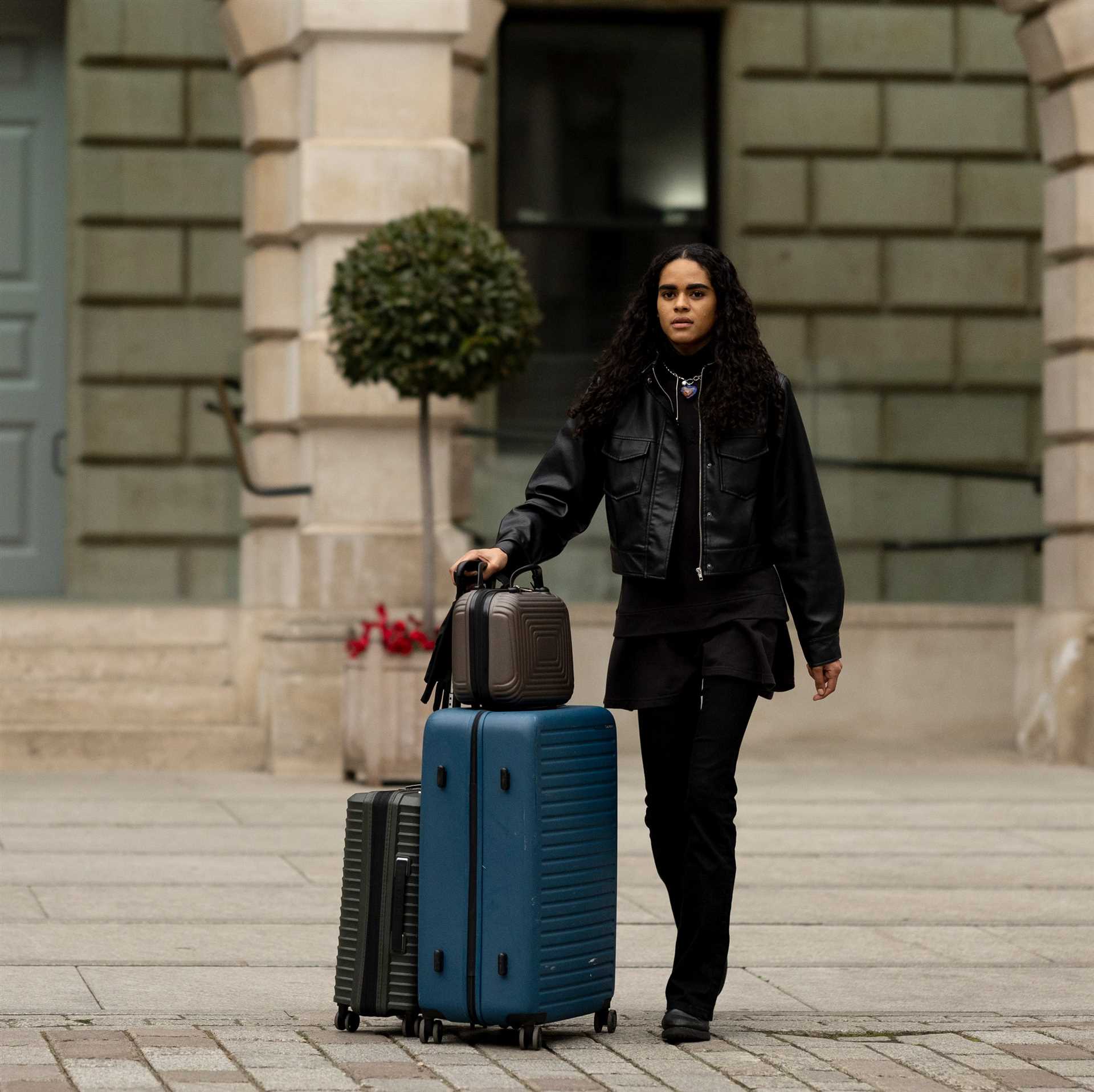







If you’re planning a trip across borders, selecting the right gear can make a significant difference in your experience. This article provides detailed insights into various options, focusing on durability, weight, and convenience. You’ll find recommendations for types of bags that cater to different travel styles, whether you’re a minimalist or someone who prefers to pack everything but the kitchen sink.
This guide is tailored for anyone preparing for their next overseas excursion, from seasoned globetrotters to occasional vacationers. It covers key features to look for, including security options, space efficiency, and ease of transport. By the end, you’ll have a clearer understanding of what works best for your needs, helping you travel with confidence.
Expect to see comparisons between hard-shell and soft-sided choices, as well as insights into the latest innovations in travel gear. With practical tips and firsthand experiences, this article will help you make informed decisions that enhance your time away from home.
Choosing the Right Size for International Flights
Opting for the correct dimensions of your bag is key to ensuring a smooth experience at the airport. Many airlines enforce strict size limits, which can vary based on the class of service and route, making it critical to check their guidelines before selecting your gear.
Carry-on bags should typically not exceed 22 x 14 x 9 inches, including handles and wheels. This standard allows for easy stowing in overhead compartments, while also providing enough space for essential items. If you plan to check your bag, a suitcase measuring around 24 to 26 inches is often suitable for longer trips, but be mindful of weight restrictions, as many airlines limit checked baggage to 50 pounds.
Understanding Airline Specifications
Different carriers have unique policies regarding baggage sizes. Familiarizing yourself with these regulations can save time and avoid potential fees. Here are some tips:
- Check the airline’s website for specific size and weight limits.
- Consider the duration of your trip to decide on the size you need.
- Remember that budget airlines may have stricter policies than larger carriers.
Utilizing a size calculator or measuring your bag can help ensure compliance. Always opt for bags that offer expandability to accommodate souvenirs or additional items on the return trip.
In summary, selecting the right dimensions can greatly enhance your travel experience, reducing stress and ensuring you stay within airline regulations.
Durability: Materials that Withstand Global Journeys
Choosing the right materials is fundamental for ensuring that your bags can endure the rigors of international excursions. High-quality options such as polycarbonate, ballistic nylon, and high-density polyethylene are designed to resist impacts, abrasions, and harsh environmental conditions. Understanding these materials can significantly influence the longevity of your travel gear.
Polycarbonate is a strong, lightweight thermoplastic that offers excellent resistance to shattering. Its flexibility allows it to absorb shocks without cracking, making it ideal for protecting fragile contents. Ballistic nylon, originally developed for military applications, is another robust option. It features a tight weave that enhances tear resistance, while its water-repellent properties help safeguard belongings in damp environments.
Key Material Features
- Polycarbonate: Lightweight, shatter-resistant, flexible.
- Ballistic nylon: Tear-resistant, water-repellent, durable.
- High-density polyethylene: Impact-resistant, UV-stabilized, lightweight.
Additional materials like aluminum also provide a sturdy alternative, particularly for hard-sided options. While heavier than plastic counterparts, aluminum cases offer exceptional security and resistance to dents and scratches. Each material serves a unique purpose, catering to various travel styles and preferences.
When selecting travel gear, consider how these materials align with your specific needs. If frequent travel involves rough handling, opting for a combination of hard and soft-shell designs can enhance durability without sacrificing weight. Investing in quality materials will pay off by protecting your belongings and ensuring your gear stands the test of time.
Essential Features for Smooth Travel Experience
Prioritize durability when selecting your bags. Materials such as polycarbonate or ballistic nylon offer resistance to wear and tear, ensuring longevity throughout your voyages. A sturdy construction also minimizes the risk of damage during handling and transportation.
Mobility plays a significant role in a pleasant experience. Look for options with spinner wheels that rotate 360 degrees, allowing for effortless maneuvering in crowded spaces like airports or train stations. Additionally, a telescoping handle should extend smoothly and lock securely at various heights for comfort.
Security and Organization
Integrating security features is crucial. Consider bags that come with built-in locks or those compatible with TSA-approved locks to safeguard your belongings. This added layer of security provides peace of mind during your travels.
Effective organization is also important. Multiple compartments assist in keeping items neatly arranged and easily accessible. Look for interior pockets, zippered sections, and external compartments for essentials like passports and boarding passes.
Weight and Size Considerations
Adhering to airline regulations regarding weight and size can prevent unwanted fees. Opt for lightweight materials that do not compromise strength, allowing for more packing without exceeding limits. An expandable feature can also be beneficial, accommodating additional items without hassle.
Lastly, consider the aesthetic appeal. A visually appealing design can enhance your travel experience, making it easier to spot your bag on a crowded luggage carousel.
Security Options to Protect Your Belongings
Investing in reliable security features is key to safeguarding your possessions during your travels. One effective approach is utilizing locks designed specifically for suitcases. Look for models equipped with TSA-approved locks, as they allow security personnel to inspect your items without damaging the lock.
Another valuable option is integrating tracking devices into your bags. These small gadgets enable you to monitor your luggage’s location through a smartphone app, providing peace of mind if your belongings go missing. Additionally, consider using anti-theft bags that incorporate lockable zippers and cut-resistant straps, offering enhanced protection against theft.
Additional Security Measures
Utilizing a combination of various security measures can significantly reduce the risk of loss or theft during your travels.
- Keep valuables close: Always carry essential items, such as passports and electronics, in a personal bag rather than in checked items.
- Use packing cubes: Organizing items in packing cubes can make it easier to keep track of your belongings and deter theft by adding an extra layer of organization.
- Opt for sturdy materials: Choose bags made from durable materials that are less susceptible to damage or tampering.
Incorporating these strategies can enhance the security of your items, making your travel experience more enjoyable and worry-free.
Weight Considerations for Airline Regulations
Airlines impose strict weight limits on baggage, which vary by carrier and destination. Passengers must familiarize themselves with these regulations to avoid unexpected fees or inconveniences at the airport. Generally, the checked baggage weight limit ranges from 50 to 70 pounds (23 to 32 kilograms), while carry-on items typically cap at around 15 to 25 pounds (7 to 11 kilograms).
To maximize packing efficiency, consider the following strategies:
- Weigh Your Bag: Use a portable scale to check your bag’s weight before arriving at the airport.
- Distribute Weight Evenly: Place heavier items at the bottom of your bag to maintain stability and prevent damage.
- Pack Light: Choose versatile clothing and limit shoes to minimize weight.
- Remove Unnecessary Items: Audit your belongings and leave behind duplicates or rarely used items.
Keep in mind that different airlines may have specific rules regarding the number of pieces allowed, as well as dimensions for carry-on items. It’s advisable to check the airline’s website or contact customer service for precise information. This preparation can lead to a smoother check-in process and avoid potential fees for overweight baggage.
Top Brands and Models Recommended by Frequent Travelers
Samsonite is frequently highlighted for its durability and innovative features. The Samsonite Winfield 3 DLX is a popular choice, known for its lightweight design and scratch-resistant shell, making it ideal for the rigors of air travel.
Another commendable brand is Rimowa, with their Essential Cabin model standing out. This piece is crafted from high-quality polycarbonate, ensuring both strength and flexibility while maintaining an elegant appearance, perfect for those who prioritize style alongside functionality.
Recommended Brands and Models
-
Samsonite Winfield 3 DLX
- Durable, scratch-resistant exterior
- Lightweight design
- Multiple compartments for organization
-
Rimowa Essential Cabin
- High-quality polycarbonate construction
- Stylish and sleek look
- Smooth-rolling wheels for easy transport
-
Travelpro Platinum Elite
- Durable fabric and reinforced seams
- Integrated USB port for charging devices
- Multiple pockets for organization
-
Tumi Alpha 3
- Premium ballistic nylon construction
- Smart luggage features for tech-savvy travelers
- Customizable options available
Frequent travelers recommend investing in quality models that combine durability, functionality, and style. Brands like Samsonite, Rimowa, Travelpro, and Tumi consistently receive high praise for their performance in various travel scenarios.
Best luggage for traveling internationally
Features
| Part Number | 68309-2824 |
| Model | 68309-2824 |
| Color | Teal |
| Is Adult Product | |
| Size | Checked-Medium 24-Inch |
Features
| Part Number | US08120N22 |
| Model | US08120N22 |
| Warranty | 3 Years |
| Color | Navy |
| Size | Carry-on 22-Inch |
Features
| Part Number | 42242-500 |
| Model | 42242-500 |
| Warranty | 2 Year Limited |
| Color | Black |
| Size | One Size |
Features
| Part Number | 4897122200878 |
| Model | PEU-R-MSD03-H-BK |
| Color | Black |
Video:
FAQ:
What features should I look for in luggage for international travel?
When selecting luggage for international travel, several key features should be considered. First, durability is important; look for materials like polycarbonate or ballistic nylon that can withstand rough handling. Second, size matters; make sure your luggage complies with airline regulations for carry-on and checked baggage. Third, organizational compartments can help keep your belongings tidy and accessible. Additionally, consider security features such as lockable zippers and built-in TSA-approved locks. Lightweight options can also ease the burden during your travels. Finally, wheels and handles should be sturdy and easy to maneuver, especially in crowded airports.
Are hard-shell suitcases better than soft-shell ones for international travel?
Choosing between hard-shell and soft-shell suitcases largely depends on personal preferences and travel needs. Hard-shell suitcases offer enhanced protection for fragile items, as they are less likely to be squished or damaged. They are often more water-resistant, which can be beneficial in unpredictable weather. However, soft-shell luggage tends to be lighter and more flexible, allowing for easier packing in tight spaces. They often come with external pockets for quick access to essentials. Ultimately, the best choice will vary based on what you prioritize—protection versus flexibility.
How can I maximize space in my luggage for international trips?
Maximizing space in your luggage can make a significant difference during international trips. Start by rolling your clothes instead of folding them; this not only saves space but also minimizes wrinkles. Use packing cubes to organize items and create more room. Consider packing versatile clothing pieces that can be mixed and matched. Don’t forget to fill shoes with small items like socks or toiletries. Additionally, limit the number of bulky items and opt for travel-sized toiletries to save space. Lastly, check the weight limits for your airline to avoid extra fees while ensuring you pack efficiently.







